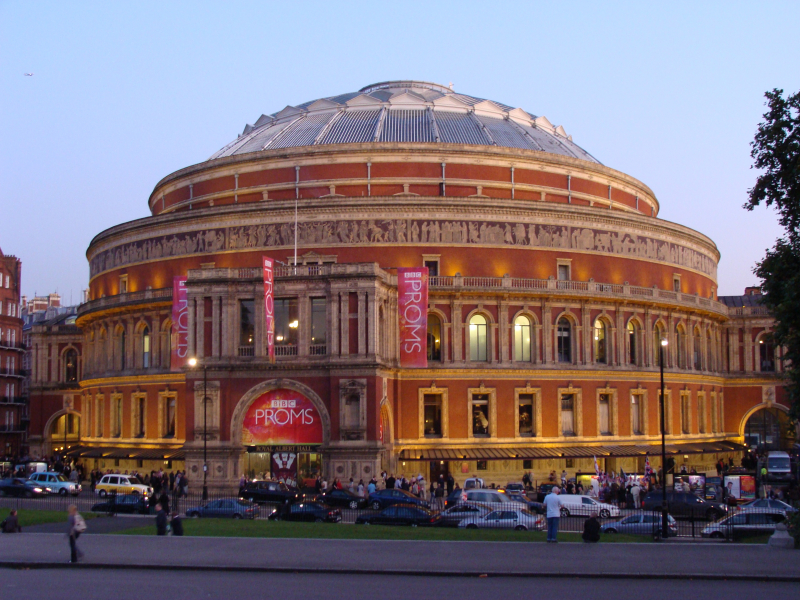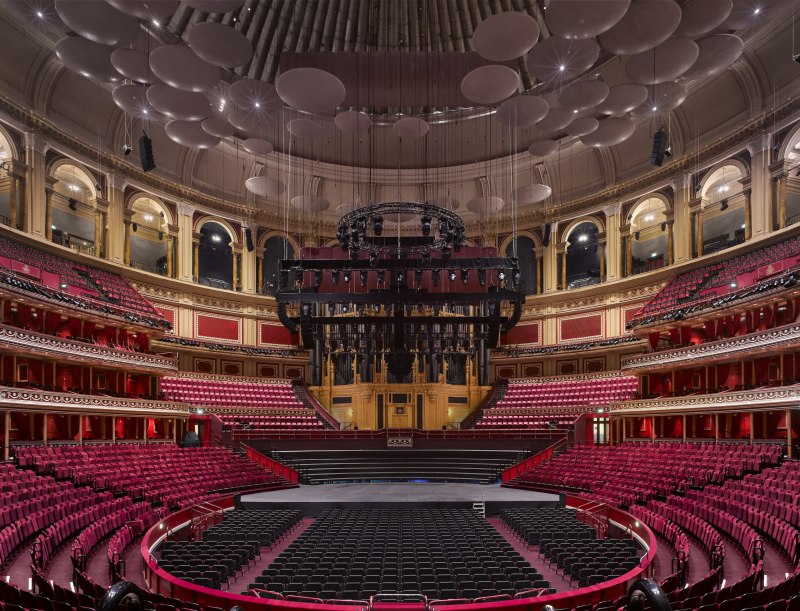Royal Albert Hall
The Royal Albert Hall, which was constructed between 1867 and 1871, is a sizable elliptical building in the Italian Renaissance style with a façade made completely of red brick and terra cotta. It is situated in Kensington Gore, United Kingdom, and was created by two excellent architects, Captain Francis Fowke and Major Henry Y. D Scott.
The hall's 800-foot-long mosaic frieze surrounds the building, which is primarily made of Fareham Red brick. The frieze is made of foot-long mosaic tesserae slabs that show 16 various allegorical groups of the "Triumph of the Arts and Sciences" in the artwork. Historical and religious phrases are written in 12 inches (300 mm) high terracotta letters above the frieze.
The well-known hall, which features live music and concerts by well-known performers as well as dance performances, award presentations, movie screenings, and sporting events, was built in the Italianate architectural style. Such events have been organized by it ever since ( 150 years ).
Queen Victoria laid the cornerstone for the Royal Albert Hall in 1867 as part of her husband Prince Albert's memorial act. The building was formerly known as the Central Hall of Arts and Sciences. The Royal Albert Hall is considered one of the most famous Victorian architecture.
Year: 1867 - 1871
Location: Kensington Gore, United Kingdom
Architect: Captain Francis Fowke and Major Henry Y.D Scott












